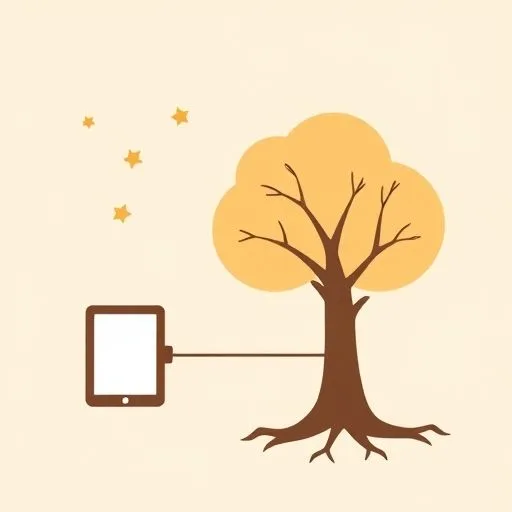
Midnight clicks echo through the dark kitchen—you’re still reviewing permissions for tomorrow’s ‘smart’ classroom tools. Earlier, our youngest asked if trees text each other through their roots, believing the chatbot’s fanciful reply as gospel. Watching their wide-eyed trust in shimmering screens tonight, it hit me: they’ll converse with more artificial minds by breakfast than my grandfather did in his lifetime. But how do we parent what we can’t peer inside? Your tired sigh tells me you’re wondering too—about the black boxes buried beneath cheerful app icons and homework helpers. That silent negotiation between convenience and protection? Felt it today while you cross-examined an AI tutor about whale classifications. We’ve been here before—learning to trust the unseen, together.
That Protective Pause Before the ‘Accept’ Button

Your finger hovering over the tablet? Recognize that hesitation—same instinct that makes you double-check car seats after installation. These aren’t permission slips anymore. They’re trust exercises with things we can’t really question at PTA meetings. Saw you scrutinizing a math app’s privacy policy this morning, lips moving silently like you’re deciphering ancient runes. Not paranoia. Just modern guardianship against playgrounds with invisible fences.
The unease creeps in sideways. That ‘educational’ chatbot last month teaching conflicting science facts to different kids in the same class. Who audits its curriculum? We obsess over organic snacks yet serve unvetted digital meals to hungry minds. Feels like grocery shopping blindfolded sometimes, doesn’t it?
Maybe verification starts there: modeling healthy interrogation of convenient truths.
The Ingredients List Standard for Digital Diets

Remember decoding baby food labels together? Now we navigate murkier terrain. Saw relief flood your face when you found that parenting app’s data practices—clear as yesterday’s chicken soup recipe. ‘Three taps to see where information goes,’ you murmured. Progress!
Wish more tech treated verification like nutrition facts. Not labyrinthine terms-of-service scrolls, but straightforward disclosures: ‘Contains 20% speculative answers,’ ‘Sources: these verified databases.’ Imagine—scanning an AI’s transparency label while packing lunchboxes!
Your approach last week stuck with me. When our eldest cited an AI essay helper, you didn’t ban it. Sat together instead, tracing its reasoning like following recipe steps—’Show me where it got this ingredient.’ Teaching discernment through shared discovery. That’s the verification standard worth replicating.
Nurturing Healthy Skepticism Alongside Wonder

Overheard our oldest debating an AI about climate change yesterday—’Cite your sources!’ she demanded, echoing your teacher-voice. Watched pride light your face as the machine conceded gaps in its data. Moments like that? They’re digital street-smart training in action!
This tightrope we walk—preserving childhood magic while teaching verification—reminds me of our first parental debates. Remember explaining Santa’s logistics while protecting the wonder? Same dance now with algorithms. ‘How does it know?’ matters as much as ‘What does it know?’
You know what’s funny? Even our smart fridge gets it wrong sometimes—alerted us it’s out of milk yesterday even though you’d just restocked. But there’s beauty in its fallibility. Shows our kids even smart systems need oversight. Like when you triple-check my ‘I definitely locked the door’ claims. Healthy skepticism, lovingly applied. Maybe that’s the verifiable truth we’re really building—that no algorithm replaces human wisdom.
Source: EigenCloud launches platform for ‘verifiable’ AI infrastructure, Silicon Angle, 2025-10-01
